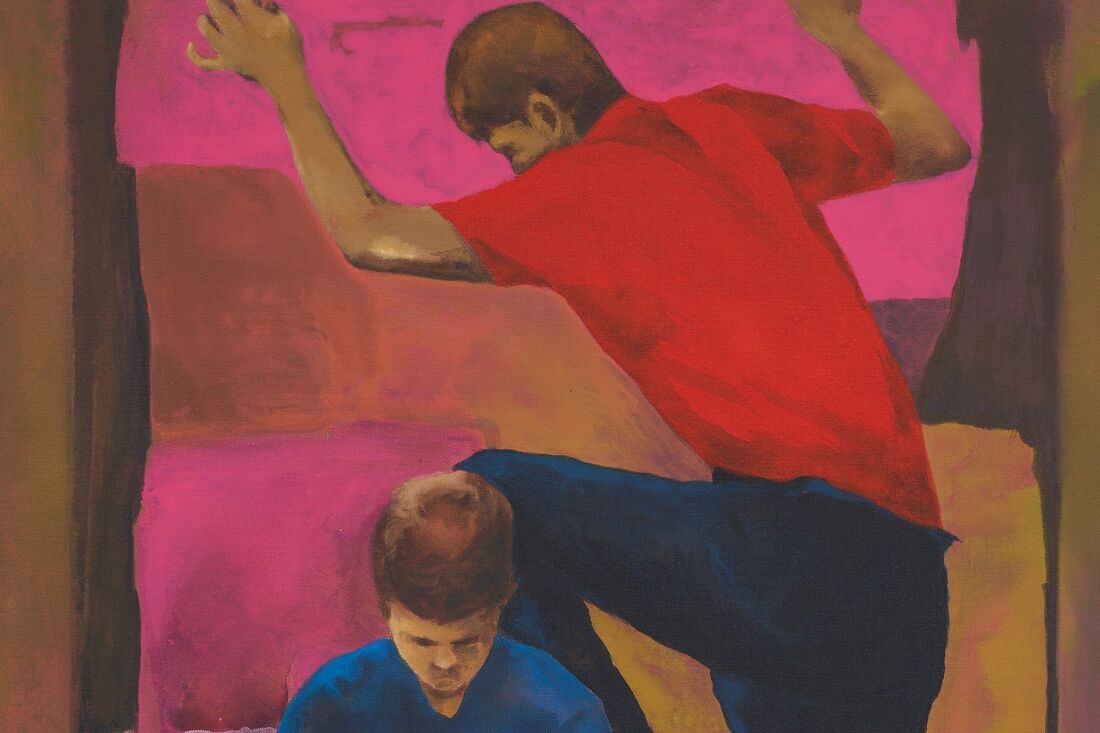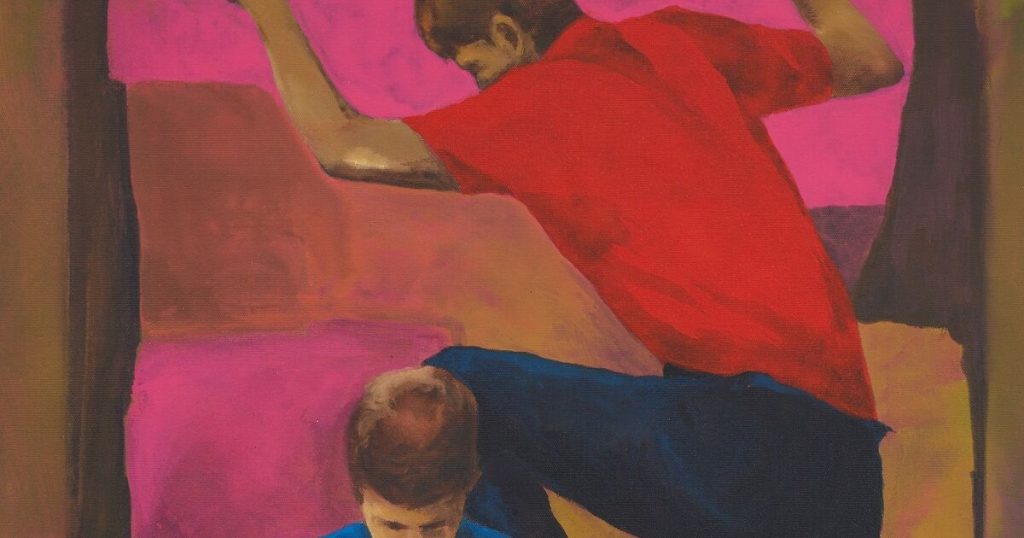
In this monthly roundup, we spotlight five star exhibitions at small and up-and-coming galleries around the world.
Although he first trained as a sculptor, Thai artist Pawarest (Doe) Choksaen worked as an art director for an advertising agency from 1997 to 2019. Only at the age of 49 did the artist decide to practice his art. the time Currently exhibiting solo at Richard Koh Fine Art, Choksaen presents a series of figurative paintings in “Conversations with Strangers” where he uses a palette of electrifying hues to illustrate fleeting, often forgotten moments of connection with others. Inspired by his community in Bangkok, his works are often quiet scenes of small groups or single subjects Breakfast (2023), depicts old ladies sitting at a meal in front of a ruddy old man. With these dreamy purples, reds and blues, Choksaen captures the essence of Thai life, while also highlighting the universal human experience of connecting with others.
Born and raised in Japan and then immersed in the Western conceptual art scene, Nishiki Sugawara-Beda experiments with ancient Japanese materials and techniques, including Sumi ink, Kakejiku landscapes and rice paper. A solo exhibition at Brooklyn’s Amos Eno Gallery, “Adapt Adopt,” presents a series of monochromatic paintings done in Sumi ink, a continuation of the artist’s “KuroKuroShiro” (black-black-white) series.
“Adapt Adopt” is based on dichotomies, clearly expressed by the stark contrasts in his black and white paintings on muslin or wood. paintings like KuroKuroShiro XL (2024), a 6 x 12-inch Sumi ink painting on muslin wrapped on wood, nods to the many color gradients between black and white, breaking this rigid dichotomy. Sugawara-Beda’s work, a witness to the ongoing dialogue between the traditions she inherits and those she encounters, challenges viewers to rethink static views of culture and identity.
As part of a live performance at the gallery on March 16, artist Damien Olsen Berdichevsky will perform the work through a live piano performance titled “Live Score to Adapt Adopt.”
In 1925, the gallerist and photographer Alfred Stieglitz organized the first exhibition “Seven Americans” in his gallery 291. This exhibition was instrumental in publicizing and legitimizing American artists as part of the modernist conversation, setting the scene for figures such as Georgia O’Keeffe. he participated in the inaugural exhibition and would emerge as a leading voice of American modernism. Celebrating this spirit, London’s JC Gallery is paying tribute to Stieglitz by renovating “Seven Americans” and presenting works by seven modernist artists: Stieglitz, John Marin, Charles Demuth, Arthur Garfield Dove, Arthur Beecher Carles, Joseph Stella and Oscar Bluemner. .
Highlights include works by Dove, Demuth, Marin and Stieglitz, all of whom participated in the original exhibition. With the addition of other works, e.g., Bluemner’s Portrait of New Jersey Belleville, NJ (1917) or Stella’s vivid and fantastic still life The Rose and the Angel (ca. 1920), an early exploration of the style unfolds for today’s audience.
Jackie Milad’s “Undoing the Knotted Parts” works in the 19th century. It refers to a 19th-century phenomenon in which British aristocrats and scholars would host “mummy-unwrapping parties,” gathering large crowds to watch bands of ancient Egyptian mummies unwrapped. At Pentimenti Gallery, Milad’s collaged, stitched, and assembled textile pieces avoid the mere spectacle of these events, offering commentary on identity, heritage, and the cyclical nature of life and death.
As a paper collage, What happens on Earth stays on Earth (2023) combines different iconographies into a complex image. Elsewhere in the “Shabtis Gather” sculptural series, Milad references his Honduran and Egyptian heritage in these sculptural works made of epoxy resin and embellished with acrylic paint. These pieces reimagine ancient Egyptian funerary imagery, which acts as a symbol of its heritage and memory, challenging viewers to rethink the meanings we assign to cultural artefacts.
This exhibition is part of (re)FOCUS 2024, a program celebrating women artists in Philadelphia.
South African artist Senzeni Mtwakazi Marasela incorporated the fictional character Theodorah into her work over 20 years ago. This image, a composite of his mother and his alter ego, helps the artist explore South Africa’s traumatic history during the apartheid era. In Bode’s “I Write (Stitch) What I Like”, the artist explores these themes in a variety of mediums, from photography and watercolor to textiles and embroidery.
Its textile piece Failure 19 (2017–23), featuring hand-stitched red wool on a mixed fabric blanket, suggests the pain experienced by women during apartheid. His watercolors are also drenched in shades of red: Pain cleanser 7 (2023) is a figurative painting depicting a woman against a background of industrial structures, further South African historical and cultural references.
Marasela expands these reds to refer to traditional African chase after fabric, as well as a personal memory of historical events such as childhood droughts that caused a red dust to settle over much of his surroundings. Overall, his work is a tribute to a long narrative of regional resilience.


